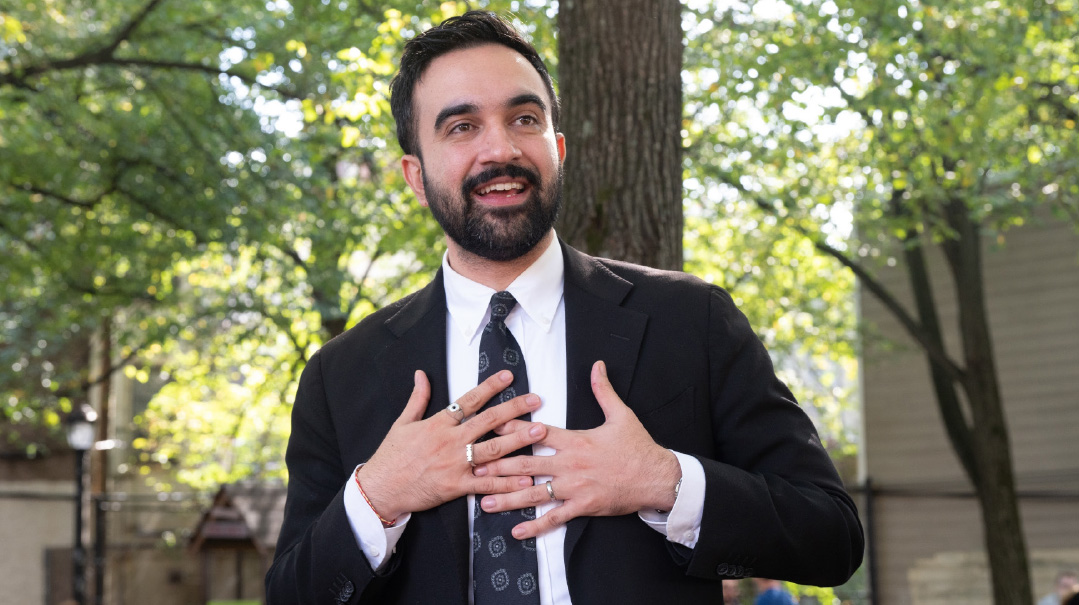Indigenous
| April 9, 2024The myth of two different peoples, both indigenous to the land, long competing for the same piece of territory, is just that: a myth

E
very Jew is indigenous to the Land of Israel.
Lay that aside.
The people who call themselves Palestinians did not do so until after the Six Day War in 1967. I was in the room at the press conference in 1977 when Egypt’s President Anwar Sadat and Israel’s prime minister went back and forth. Sadat referred to “the Palestinians.” Begin pointedly retorted, “the Arabs of the Land of Israel.”
Lay that aside.
Some say that the Arabs in the Land of Israel were expelled during Israel’s War of Independence in 1948. Others say that their leaders told them to leave, for in a short time they would return to a land empty of Jews. Some say it was a bit of both.
Lay that aside.
Some Arab politicians during the British Mandate period (1922–1948) sold land to Jews even as they publicly agitated against land acquisition by Jews.
Lay that aside.
Lay aside all the arguments about whom the Land of Israel belongs to.
Focus narrowly on just one single data point in the claim that Jews expelled “750,000 indigenous Palestinians” in 1948 — a claim widely circulated and widely assumed to be correct.
This is the critical data point I wish to isolate: Were there, in fact, 750,000 “indigenous” Arabs in the Land of Israel in 1948? Focus only on one-half of the claim that the land is home to two peoples going back hundreds or thousands of years, one of those peoples being Palestinian Arab. Focus only on that.
Open-source data, available on Wikipedia, reveals a dramatic growth in the Arab population in the land coinciding with the immigration of Jews mainly from Europe to the Land of Israel. Jews did not displace local Arabs, Jews lured non-local, non-indigenous Arab immigrants to the land. Check the data:
The Jewish immigration began in earnest in 1881. The Wikipedia figures do not dovetail exactly with 1881, but they are close enough. From 1800 to 1890, the Arab population grew by some 54%. The Muslim population of the area in 1800 was 246,000, and the Christian population 22,000. I assume the Christians were Arabs, for a total Arab population in 1800 of 268,000. In 1890, the Muslim Arab population stood at 432,000 and the Christian Arabs at 57,000, for a total of 489,000.
That’s roughly a 54% growth rate over 90 years.
Compare that to the Arab population growth rate from 1890 to 1947.
That period is when the Jews returned to the area. The year 1947 is when the UN partitioned the land into two states, one Jewish, one Arab, and the year that Israel’s War of Independence began.
In 1947, the Muslim Arab population was 1,181,000 and the Christian Arab was 143,000.
That’s roughly a 270% growth rate over 57 years, since 1890.
Do the math. With the arrival of Jews to the land of Israel, the Arab population jumped dramatically from a 54% rate over 90 years to a 270% rate over 57 years.
Demography is complicated and other factors besides Zionism may have been involved. But the sheer dimension of the Arab growth rate — again, open-source Wikipedia figures; again, 270% in the 57 years of Jewish growth against 54% in the prior 90 years — shows that a major chunk of the Arabs in Palestine at the time of Israel’s War of independence were newcomers or their children, not “indigenous.”
What the population figures show statistically, Mark Twain saw impressionistically. He visited Greece, Lebanon, Syria, and the Holy Land in 1867. In the Land of Israel, he discerned patches of fertility. He wrote, for example, “The narrow canyon in which Nablous [sic], or Shechem, is situated, is under high cultivation, and the soil is exceedingly black and fertile. It is well watered, and its affluent vegetation gains effect by contrast with the barren hills that tower on either side.”
It was those barren hills and similar terrain that overwhelmed Twain. Having traversed the Jezreel Valley on horseback, he wrote:
“There is not a solitary village throughout its whole extent — not for 30 miles in either direction. There are two or three small clusters of Bedouin tents, but not a single permanent habitation. One may ride ten miles, hereabouts, and not see ten human beings.”
Other excerpts from Twain’s Palestine travelogue:
“A desolate country whose soil is rich enough, but is given over wholly to weeds — a silent, mournful expanse.... A degree of desolation is here that not even imagination can grace with pomp of life and action... We never saw a human being on the whole route... hardly a tree or shrub anywhere. Even the olive tree and the cactus, those fast friends of a worthless soil, had almost deserted the country. Palestine sits in sackcloth and ashes. Over it broods the spell of a curse....”
His impression of parts of Greece and Syria was much the same. But of Palestine he wrote, “Of all the lands for dismal scenery, I think Palestine must be the prince....”
No sizable population in Palestine, Arab or otherwise.
Even the brevity of Twain’s visit, in the hot summer to boot, cannot obscure the miserable condition of the land that the Jewish immigrants found and that they then patiently transformed. It is only with the coming of the Jews to the Land of Israel that the “curse” over the land began to lift and the land began to bloom. It became attractive to others — including non-indigenous Arabs.
What is now pejoratively called “colonization” was, in fact, the return of the Jews to their ancient homeland, a pattern that Arabs in surrounding areas were happy to benefit from economically, medically, and agriculturally.
The myth of two different peoples, both indigenous to the land, long competing for the same piece of territory, is just that: a myth.
Rabbi Hillel Goldberg is the editor and publisher of the Intermountain Jewish News, for which he has written a weekly column, “View from Denver,” since 1972, and the author of numerous seforim about the mussar movement and other subjects.
His column will appear once a month.
(Originally featured in Mishpacha, Issue 1007)
Oops! We could not locate your form.







